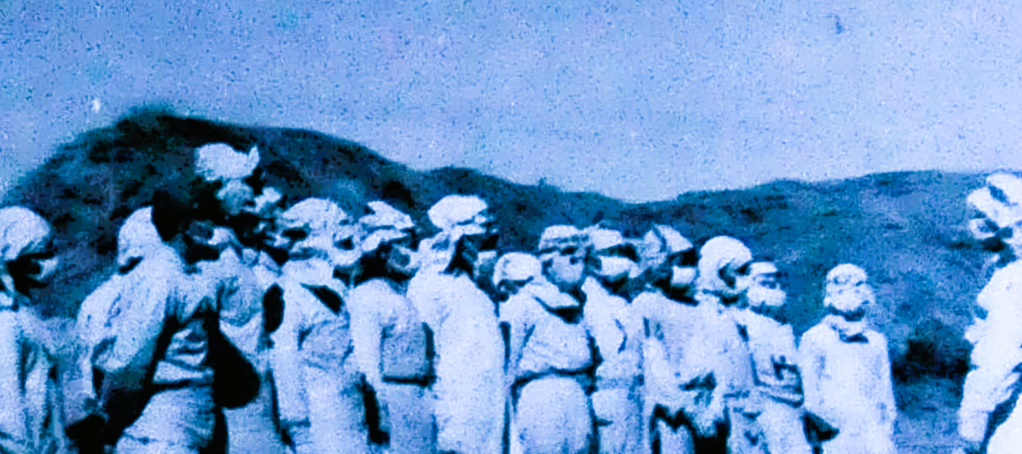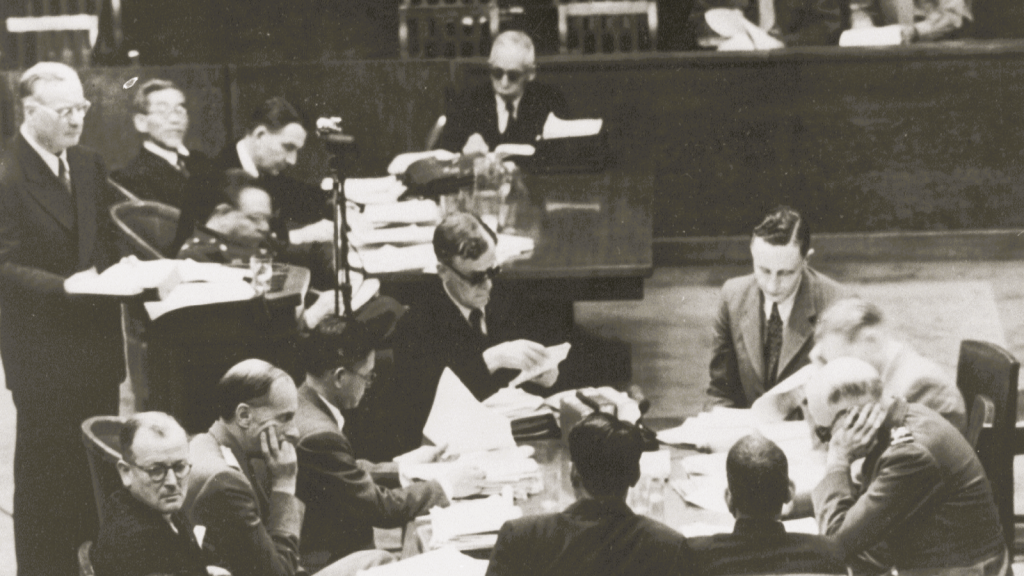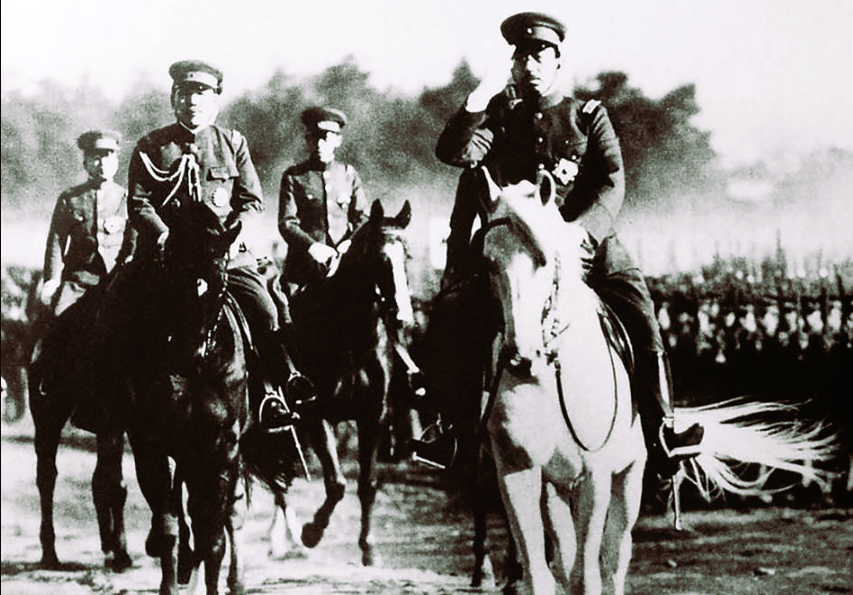
Most people will have heard of the Nuremberg Trials, but few have heard of the International Military Tribunal for the Far East (IMTFE) or the Tokyo War Crimes Trial. The Nuremberg trials are often criticized because of the low number of convictions of Nazi War criminals. The conviction rate of the International Military Tribunal for the Far East was even lower. Most surprisingly, the Japanese Emperor wasn’t even prosecuted for war crimes, despite him being responsible for the “Three Alls policy,” a Japanese scorched earth policy adopted in China during World War II, the three “alls” being “kill all, burn all, loot all” which caused the death of 2.7 million Chinese civilians.
It is often underestimated how cruel the Japanese Imperial Army and Navy were and the air force to an extent. The number of civilians killed by the Japanese surpassed the number of civilians killed by the Nazis. Estimates for civilian deaths in China due to Japanese occupation range from 10 million to 20 million. This includes deaths from massacres, forced labor, starvation, and other war-related causes. Estimates for civilian casualties in Southeast Asian countries, including the Philippines, Indonesia, and others, are in the range of 4 million to 6 million. However, these are estimates and the real number is more the likely to be higher. The chaotic nature of wartime conditions and the deliberate destruction of records by Japanese forces have made precise counts difficult.
Below are just a few of the atrocities committed by the Japanese.
Nanjing Massacre (1937-1938):
Estimated Deaths: Approximately 200,000 to 300,000 civilians.
Description: During the six-week massacre following the capture of Nanjing, the Japanese forces committed widespread atrocities, including mass executions, rapes, and looting.
Manila Massacre (1945):
Estimated Deaths: Around 100,000 civilians.
Description: As the Japanese forces retreated from Manila, they massacred civilians and destroyed much of the city.

Unit 731 Human Experimentation and Biological Warfare:
Estimated Deaths: Tens of thousands of civilians.
Description: Unit 731 conducted lethal human experimentation and used biological weapons on Chinese civilians, causing numerous deaths. Initially set up by the military police of the Empire of Japan, Unit 731 was taken over and commanded until the end of the war by General Shirō Ishii, a combat medic officer. The facility itself was built in 1935 as a replacement for the Zhongma Fortress, a prison and experimentation camp. Ishii and his team used it to expand their capabilities. The program received generous support from the Japanese government until the end of the war in 1945.
Both the Soviet Union and the United States gathered data from the Unit after the fall of Japan. While twelve Unit 731 researchers arrested by Soviet forces were tried at the December 1949 Khabarovsk war crimes trials, they were sentenced lightly to the Siberian labor camp for two to 25 years in exchange for the information they held. Vivisection was performed in Unit 731 without anesthesia to study the operations of living systems. It was performed on thousands of victims, primarily Chinese communist prisoners as well as children and elderly farmers. They were infected with diseases such as cholera and the plague and then had their organs removed for examination before they died in order to study the effects of the disease without decomposition after death.
Subjects that were used to study the progress of gangrene had their limbs amputated and reattached to the other side of the body, while others had their limbs crushed or frozen or had their circulation cut off. After the body was used up and exhausted, they were typically shot or killed by lethal injection.
The International Military Tribunal for the Far East (IMTFE) was established to prosecute leaders of the Empire of Japan for war crimes committed during World War II. It was one of several international military tribunals established after World War II to address war crimes, with the Nuremberg Trials being its European counterpart.
Establishment and Jurisdiction
- Date Established: January 19, 1946
- Location: Tokyo, Japan
- Legal Basis: The tribunal was established under the authority of the Supreme Commander for the Allied Powers (SCAP), General Douglas MacArthur, as per the charter approved on January 19, 1946.
- Scope: The IMTFE had jurisdiction over major war criminals accused of three categories of crimes: crimes against peace (planning and waging wars of aggression), conventional war crimes (violations of the laws and customs of war), and crimes against humanity (atrocities and offenses committed against civilians).

Structure and Composition
- Judges: The tribunal consisted of 11 judges, one from each of the Allied nations: United States, Soviet Union, United Kingdom, China, France, Australia, Canada, New Zealand, Netherlands, India, and the Philippines.
- Prosecutors: The prosecution team was led by Chief Prosecutor Joseph B. Keenan from the United States, with additional prosecutors from each of the Allied nations.
- Defendants: The tribunal indicted 28 Japanese political, military, and civilian leaders, including former prime ministers, cabinet members, and military commanders.
Charges and Proceedings
- Charges: The defendants were charged with crimes against peace, war crimes, and crimes against humanity. These charges were based on their roles in planning and executing aggressive war strategies, committing atrocities against civilians and prisoners of war, and other violations of international law.
- Duration: The tribunal convened from May 3, 1946, to November 12, 1948.
- Outcome: Of the 28 defendants, 7 were sentenced to death by hanging, 16 were sentenced to life imprisonment, and the remaining received lesser sentences. Two defendants died during the trial, and one was declared insane and unfit to stand trial.
Legacy and Impact
- Legal Precedent: The IMTFE, along with the Nuremberg Trials, set important legal precedents for international law, particularly in the prosecution of war crimes and crimes against humanity. It contributed to the development of principles that would later be incorporated into the International Criminal Court and other international legal frameworks.
- Controversies: The tribunal faced criticism for several reasons, including allegations of Victor’s justice, questions about the fairness of the proceedings, the exclusion of certain high-ranking officials from prosecution, and the leniency of some sentences. Additionally, some argued that the tribunal’s focus was overly narrow, concentrating on Japanese leaders while ignoring crimes committed by the Allies.
Notable Figures
- General Douglas MacArthur: As the Supreme Commander for the Allied Powers, MacArthur played a key role in establishing and overseeing the tribunal.
- Joseph B. Keenan: The chief prosecutor from the United States who led the prosecution team.
- Hideki Tojo: The former Prime Minister of Japan and one of the principal defendants, who was sentenced to death and executed in 1948.
- Radhabinod Pal: The Indian judge who issued a dissenting opinion, arguing that the tribunal was an act of victor’s justice and questioning the legitimacy of the proceedings.

List of Judges
Justice Harlan F. Stone (United States)
Justice Myron Cady Cramer (United States)
Justice John Patrick Higgins (United States)
Justice Henri Bernard (France)
Justice Delfin Jaranilla (Philippines)
Justice Edward Stuart McDougall (Canada)
Justice Ju-ao Mei (China)
Justice Erima Harvey Northcroft (New Zealand)
Justice Radhabinod Pal (India)
Justice William Donald Patrick (UK)
Justice Bernard Victor Aloysius Röling (Netherlands)
Justice William Flood Webb (Australia)
List of Chief Prosecutors
Ernest E. Danly (United States)
Theodore Goulsby (United States)
Carlisle Wallace Higgins (United States)
Solis Horwitz (United States)
Joseph Berry Keenan (United States)
Luke Lea (United States)
Edward P. Monaghan (United States)
Roy L. Morgan (United States)
Arthur A. Sandusky (United States)
Frank Stacy Tavenner (United States)
List of Defendants
Sadao Araki
Kenji Doihara
Kingorō Hashimoto
Shunroku Hata
Kiichirō Hiranuma
Kōki Hirota
Naoki Hoshino
Seishirō Itagaki
Okinori Kaya
Kōichi Kido
Heitarō Kimura
Kuniaki Koiso
Iwane Matsui
Jirō Minami
Akira Mutō
Osami Nagano
Takasumi Oka
Shūmei Ōkawa
Hiroshi Ōshima
Kenryō Satō
Mamoru Shigemitsu
Shigetarō Shimada
Toshio Shiratori
Teiichi Suzuki
Shigenori Tōgō
Hideki Tōjō
Yoshijiro Um
On September 9, 1947, 15 months and over 1,500 pages of opinion later, judgments were ready to be read.
Charges were dropped for Shūmei Ōkawa because he was found to be mentally unfit for trial. Two defendants, Yōsuke Matsuoka and Osami Nagano, died of natural causes during the trial. Six defendants were sentenced to death by hanging for war crimes, crimes against humanity, and crimes against peace (Class A, B, and C). One defendant, Iwane Matsui, was sentenced to death for war crimes and crimes against humanity (Class B and C). On December 23, 1948, the defendants were executed at Sugamo Prison with Allied Council as witnesses.
Six defendants were sentenced to life in prison. Koiso, Shiratori, and Umezu died in prison, while the other 13 were paroled between 1954 and 1956
List of Executions
General Kenji Doihara
Kōki Hirota
General Seishirō Itagaki
General Heitarō Kimura
Lieutenant General Akira Mutō
General Hideki Tōjō
Australia, China, France, the Netherlands Indies, the Philippines, the United Kingdom, and the United States convened separate trials convicting more than 5,500 more lower-ranking war criminals. The trials were held all over Asia and the Pacific, and the last one was conducted in 1951. China had 13 tribunals, resulting in 504 convictions and 149 executions. The total number of death sentences is as follows:
United States – 140
The Netherlands – 236
United Kingdom – 223
Australia – 153
China – 149
France – 26
Philippines – 17

The Fate of Emperor Hirohito
Emperor Hirohito’s fate in the context of the International Military Tribunal for the Far East (IMTFE) is a subject of significant historical interest and controversy. Despite his position as the head of state of Japan during World War II, Hirohito was not prosecuted by the IMTFE.
___
The Supreme Commander for the Allied Powers (SCAP), General Douglas MacArthur, and his advisors decided early on that prosecuting Emperor Hirohito would destabilize Japan and hinder post-war reconstruction efforts. MacArthur believed that Hirohito’s cooperation was essential for the occupation and rebuilding of Japan.
The decision to grant Hirohito immunity was also influenced by broader geopolitical considerations. The Allies, particularly the United States, were keen on using Japan as a bulwark against the spread of communism in Asia, especially with the emerging Cold War tensions with the Soviet Union.
___
The Allies portrayed Hirohito as a constitutional monarch who was essentially a ceremonial figurehead without real power over military decisions. This narrative helped justify his exemption from prosecution.
Hirohito’s statements and actions post-war, including his renunciation of divinity and cooperation with occupation authorities, further solidified the Allies’ stance on his immunity.
___
Within Japan, there was a mixed reaction to Hirohito’s immunity. Some saw it as a relief and a chance for national stability, while others believed that he should have been held accountable. Many international observers and historians have criticized the decision, arguing that Hirohito bore significant responsibility for Japan’s wartime actions. They contend that his immunity represented a double standard in the prosecution of war criminals.
___
Hirohito remained on the throne until he died in 1989, overseeing Japan’s transformation from a militaristic empire to a peaceful, democratic nation. His role in post-war Japan was instrumental in maintaining continuity and stability.
The debate over Hirohito’s responsibility and the decision to exempt him from prosecution continues to be contentious in historical scholarship and public discourse. It raises important questions about accountability, justice, and the complexities of post-war reconciliation.
Sources
https://www.nationalww2museum.org/war/topics/tokyo-war-crimes-trial
https://www.theguardian.com/world/2018/apr/17/japan-unit-731-imperial-army-second-world-war#img-1
https://www.pacificatrocities.org/human-experimentation.html
http://imtfe.law.virginia.edu/
https://www.loc.gov/item/2021692613/

Donation
Your readership is what makes my site a success, and I am truly passionate about providing you with valuable content. I have been doing this at no cost and will continue to do so. Your voluntary donation of $2 or more, if you are able, would be a significant contribution to the continuation of my work. However, I fully understand if you’re not in a position to do so. Your support, in any form, is greatly appreciated. Thank you. To donate, click on the credit/debit card icon of the card you will use. If you want to donate more than $2, just add a higher number in the box left from the PayPal link. Your generosity is greatly appreciated. Many thanks.
$2.00
Leave a comment